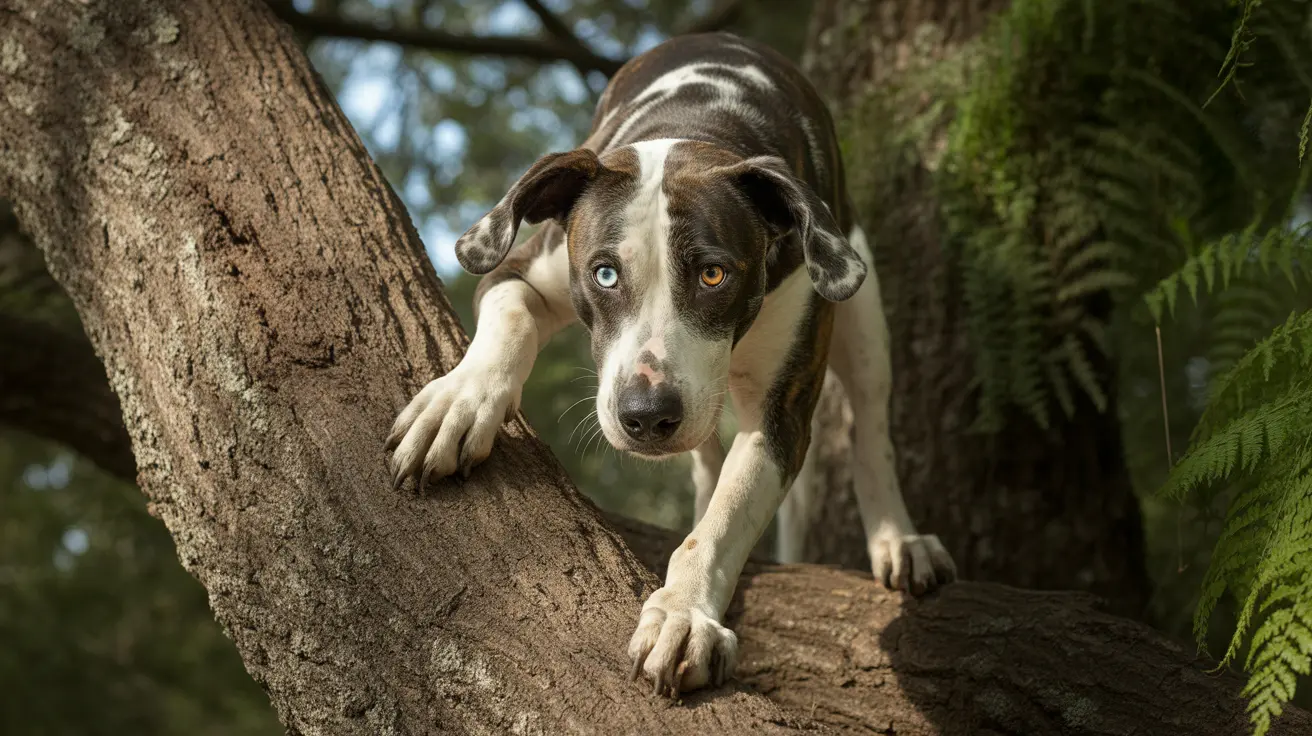While cats are natural climbers, many pet owners wonder if their dogs possess similar abilities. The truth is, while most dogs aren't built for climbing trees, some breeds and individual dogs can surprise us with their climbing prowess. Let's explore the fascinating world of canine tree-climbing abilities, including which breeds are most likely to show this unusual skill and what makes it possible.
Understanding whether dogs can climb trees involves examining their physical capabilities, breed characteristics, and the circumstances that might motivate them to attempt such a feat. This comprehensive guide will help you understand the reality behind dogs and tree climbing, including important safety considerations.
The Physical Limitations of Dogs as Climbers
Unlike their feline counterparts, dogs face several anatomical challenges when it comes to climbing trees. Their bodies are primarily designed for running and endurance rather than vertical climbing. Dogs lack the retractable claws that cats use to grip tree bark, and their spine isn't nearly as flexible, making it difficult to maneuver up vertical surfaces.
Additionally, dogs' claws are thicker and blunter, evolved for digging and gripping the ground rather than hooking into tree bark. Their muscular structure and weight distribution also favor horizontal movement over vertical climbing.
Exceptional Breeds That Can Climb Trees
While most dogs aren't natural climbers, certain breeds have developed remarkable climbing abilities:
- Louisiana Catahoula Leopard Dog: Known for their agility and hunting prowess
- Treeing Walker Coonhound: Specifically bred to chase prey up trees
- Jack Russell Terrier: Small, agile, and determined enough to climb when motivated
- New Guinea Singing Dog: Shows surprising climbing abilities despite being rare
How Some Dogs Manage to Climb
When dogs do successfully climb trees, they typically employ specific techniques:
- Using lower, angled branches as stepping stones
- Utilizing their powerful leg muscles to launch themselves upward
- Gripping bark with their claws for traction
- Taking advantage of tree formation and structure
Safety Considerations for Climbing Dogs
If your dog shows interest in climbing trees, it's crucial to understand the associated risks:
- Risk of falling from height
- Potential for claw damage or breakage
- Possibility of getting stuck
- Strain on joints and muscles
Never encourage untrained dogs to climb trees, and always supervise those that show this tendency naturally.
Frequently Asked Questions
Can any dog breed naturally climb trees, or is it limited to specific breeds?
While some breeds like the Catahoula Leopard Dog and Treeing Walker Coonhound are more predisposed to climbing, most dogs aren't natural climbers. Individual dogs may show climbing abilities regardless of breed, but it's relatively rare.
How do dogs manage to climb trees without retractable claws like cats?
Dogs that climb trees typically rely on their strong leg muscles, momentum, and rough bark for grip. They often use lower branches or angled trunks, and their regular claws can provide some traction, though not as effectively as cats' retractable claws.
What safety risks should I be aware of if my dog tries to climb trees?
The main risks include falling injuries, getting stuck, claw damage, and muscle strain. Dogs aren't naturally equipped for climbing and may not know how to get down safely once they're up in a tree.
How can I train or encourage my dog to climb trees safely, if possible?
It's generally not recommended to train dogs to climb trees as it's not a natural behavior for most breeds and carries significant safety risks. Instead, focus on activities better suited to their natural abilities.
Why don't most dogs climb trees even if they see prey like squirrels above ground?
Most dogs haven't evolved the physical adaptations needed for climbing trees. Their anatomy is better suited for running and ground-based activities, and they lack the natural instincts and equipment (like retractable claws) that make tree climbing practical.
Conclusion
While the answer to "can dogs climb trees?" isn't a simple yes or no, it's clear that most dogs aren't built for this activity. Some exceptional breeds and individuals may show climbing abilities, but it's important to prioritize safety and focus on activities better suited to your dog's natural capabilities.
Instead of encouraging tree climbing, consider engaging your dog in more appropriate activities like agility training, running, or fetch – activities that align with their natural abilities and keep them safe while providing necessary exercise and mental stimulation.






